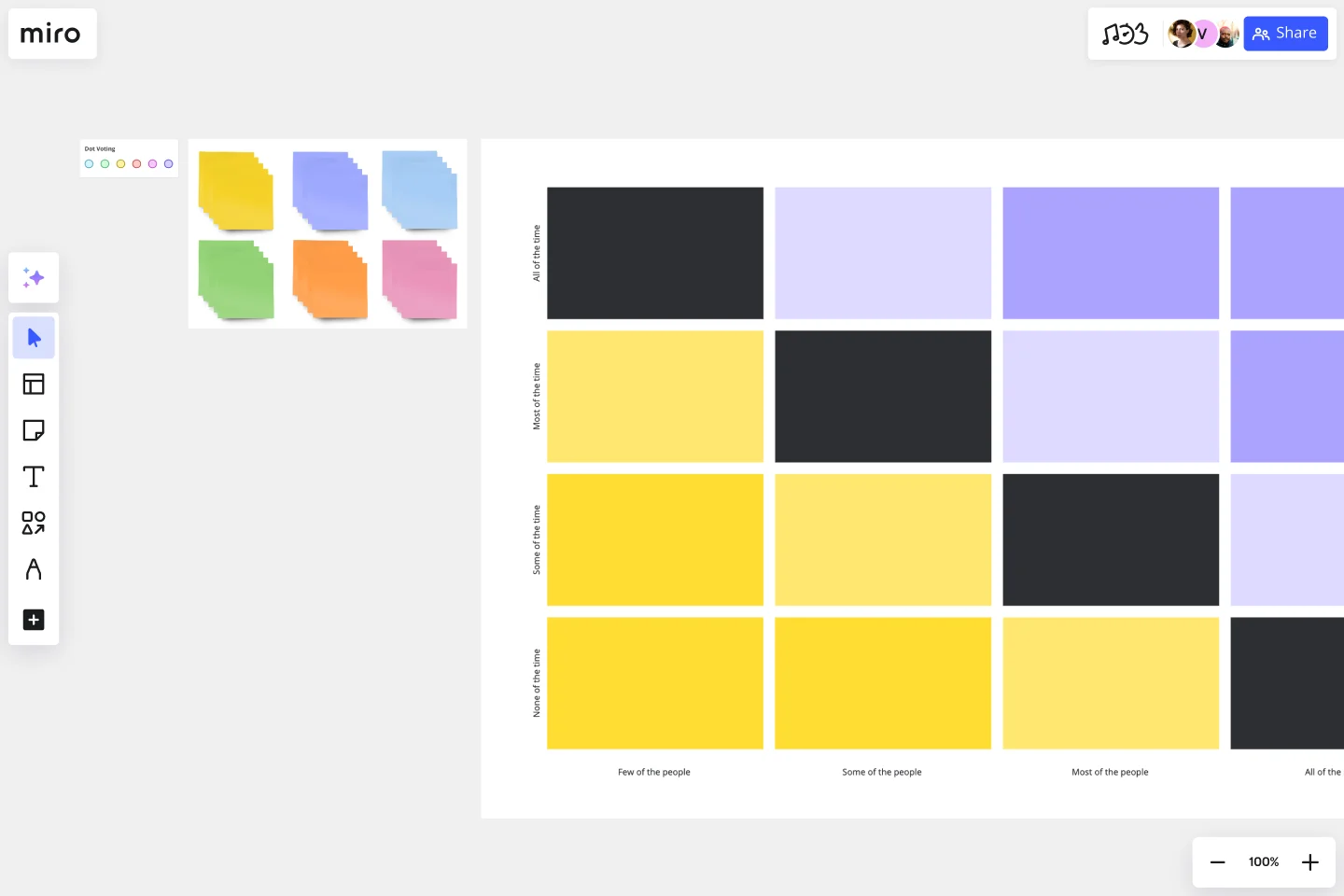Features Audit Template
Identify the right features to invest in, and which ones to remove.
About the Features Audit template
What is a Feature Audit?
Before you plan your product roadmap, it helps to pause and take stock of your features. Specifically, ask yourself: Are my customers using all of my product’s features? The answer is usually no — that’s normal!
If you discover features that your customers are not using, it’s time to perform a feature audit. In a feature audit, you choose how to treat a feature with limited adoption. You have four options. First, you can remove the feature from your product. Second, you can increase the adoption rate to make sure more customers have visibility into the feature. Third, you can increase the frequency with which customers are using the feature. Fourth, you can improve the feature.
Why should you try Features Audit?
Features audit will help you admit defeat and remove unnecessary features from your product; it will also help you increase the adoption rate (get more people to use it), increase the frequency of usage (get people to use it more often), and deliberately improve your product, quantifiably improving outcomes for those who use it.
What you can learn from a features audit
1. Identify how many people are actually using each of your product’s features. Map it on two dimensions: adoption (how many people use a feature) and frequency (how often people use it).
2. Analyze all core features in terms of value and quality. Conduct the survey or focus group or brainstorm together with your team to jump start.
3. Move features identified in step 1 to new quadrants to play around with improving frequency or adoption.
4. Look at the results and turn your map into action plan.
How can Miro help you perform your Features Audit?
Start with a Miro pre-ready Features Audit template to save time.
Take advantage of handy features to make your Features Audit quickly.
Upload and store all necessary documents in one convenient place.
Research, ideate and collaborate with your team online, sharing real-time access to the board.
Use video chat, comments and mention to ask questions and get quick feedback.
Get started with this template right now.
Product Voice Design toolkit
Works best for:
Product Management, Planning
The Product Voice Design toolkit facilitates the development of consistent and impactful product messaging. By defining brand voice attributes, tone guidelines, and messaging principles, this toolkit ensures that product communication resonates with target audiences. With sections for crafting messaging frameworks, storytelling templates, and content guidelines, it empowers product teams to create compelling and cohesive product narratives. This toolkit serves as a valuable resource for enhancing product communication strategies and building strong brand identities.
Lean Canvas Template
Works best for:
Agile Methodology, Strategic Planning, Agile Workflows
Business opportunities can get dense, cumbersome, and complex, and evaluating them can be a real challenge. Let a lean canvas streamline things and break down your business idea for you and your team. A great tool or entrepreneurs and emerging businesses, this one-page business model gives you an easy, high-level view of your idea — so you can stay focused on overall strategy, identify potential threats and opportunities, and brainstorm the various factors at play in determining your potential profitability in an industry.
Easter Egg Retrospective
Works best for:
Agile Methodology, Retrospectives, Meetings
The Easter Egg Retrospective template offers a themed approach to retrospectives, incorporating elements of the Easter holiday. It provides elements for reflecting on past iterations, hunting for hidden insights, and brainstorming improvements. This template enables teams to have fun while addressing serious topics, fostering creativity and collaboration. By promoting a playful yet productive atmosphere, the Easter Egg Retrospective empowers teams to uncover hidden gems, drive improvement, and strengthen team cohesion effectively.
Roadmap Mountain
Works best for:
Roadmap, Planning, Mapping
The Roadmap Mountain template provides a metaphorical framework for planning and visualizing project objectives and milestones. By depicting the journey towards achieving goals as a mountain ascent, teams can inspire motivation and focus. This template encourages collaborative goal-setting and fosters a sense of accomplishment as teams progress towards their summit. With clear milestones in sight, teams can stay motivated and track their progress effectively.
Product x Marketing Roadmap
Works best for:
Product Management, Roadmap
Align product development with marketing strategies using the Product x Marketing Roadmap. This template helps you coordinate product launches, marketing campaigns, and key milestones. Use it to ensure both teams are on the same page, maximizing the impact of your product releases. Ideal for product managers and marketing teams aiming to synchronize their efforts and achieve cohesive, successful product launches and campaigns.
Daily Schedule Template
Works best for:
Planning, Project Management
The Daily Schedule Template is a vital tool for managing daily routines efficiently. It helps plan and organize tasks, appointments, and priorities with great precision. Its adaptability allows users to allocate time efficiently, adjust schedules as per changing priorities, and navigate the day with ease. With this template, individuals can integrate daily activities with their broader goals, contributing meaningfully to their overall success.
